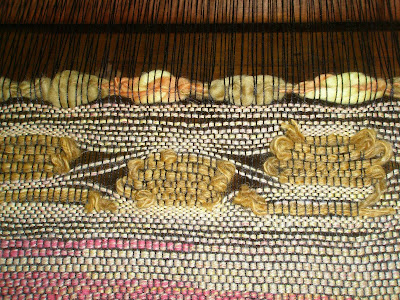 My carding has become very circumscribed by convention over the last few years. Yesterday I took a baby step towards freeing my carding. With some grey alpaca as the bread I made a sandwich with scraps of merino from previous cardings, spun it, loved it and kept making more until I'd used the whole bag of scraps.
My carding has become very circumscribed by convention over the last few years. Yesterday I took a baby step towards freeing my carding. With some grey alpaca as the bread I made a sandwich with scraps of merino from previous cardings, spun it, loved it and kept making more until I'd used the whole bag of scraps.I've still got a long way to go. My next carding challenge is make every sandwich different and see what appears on the wheel
Here's the single - with some silk too.
I soaked the single in hot soapy water then moved a plunger up and down to begin felting the single to stabilise the twist. I lost my rhythm every time the plunger stuck to the bottom of the bucket.
Then I removed the skein, pressed out the excess water, folded it in half, gently rubbed on Sunlight soap and felted the skein in a bamboo placemat NOT very much. As soon as the skein started to stick together, I reskeined the yarn, then rinsed it in cold water. It's easiest if I wind the skein off the bobbin onto the skein winder and then I use a niddy noddy for the second skeining. I found that I could get away without any more felting and reskeining.
I took out the saturated skein snapped it twice then hung it to dry. I always get quite wet during the snapping but it straightens out the yarn so well I don't mind. I hung it out sopping wet to dry without any weight.
The finished skein is soft, light and airy.















































